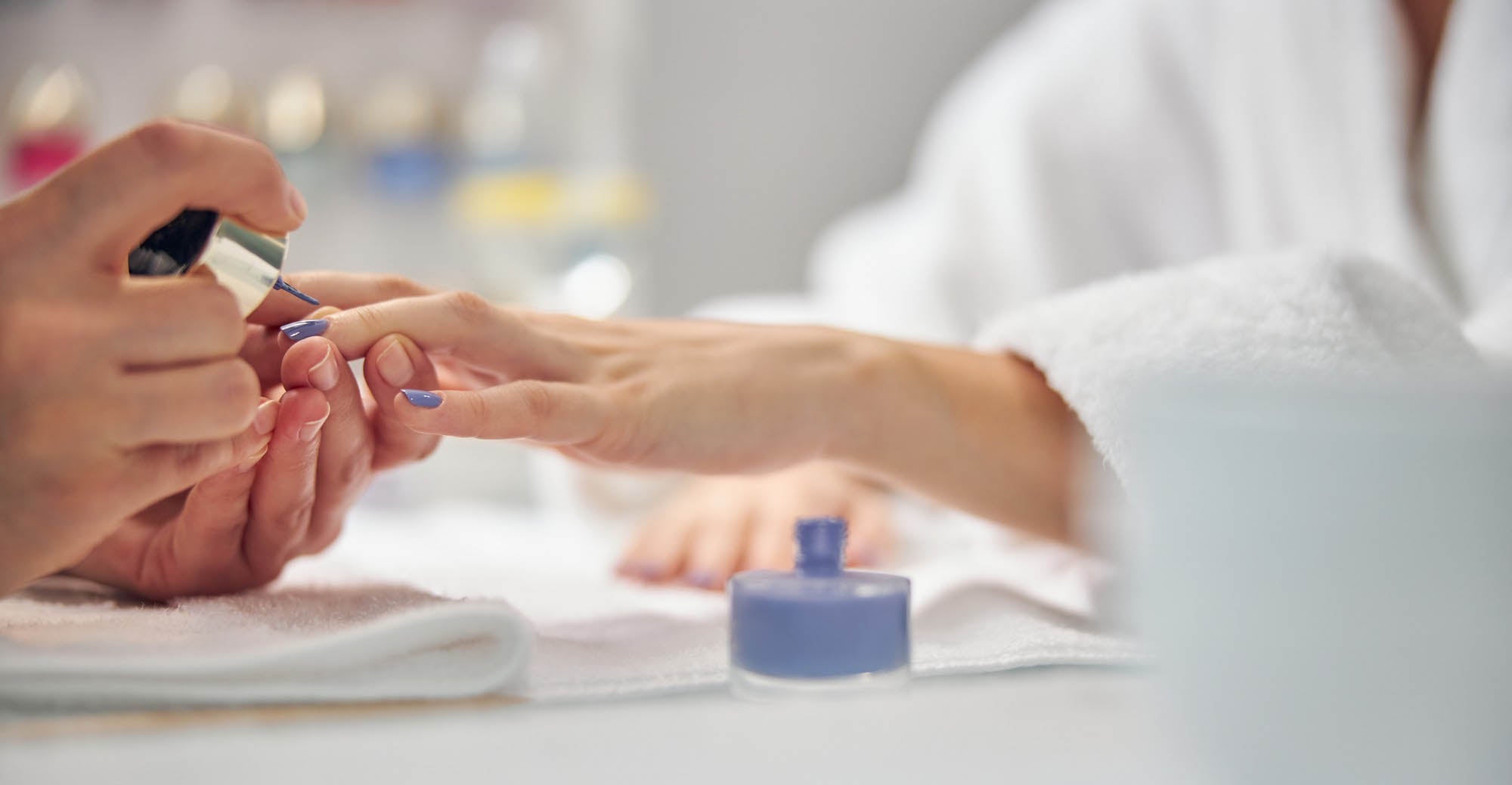
Nail Salon Health and Safety Templates & Guidance
Pre-filled, editable health and safety templates for nail salons, nail bars, and mobile nail technicians — including risk assessments, policies, COSHH documents, electrical safety, and more to keep your business safe, professional, and compliant.
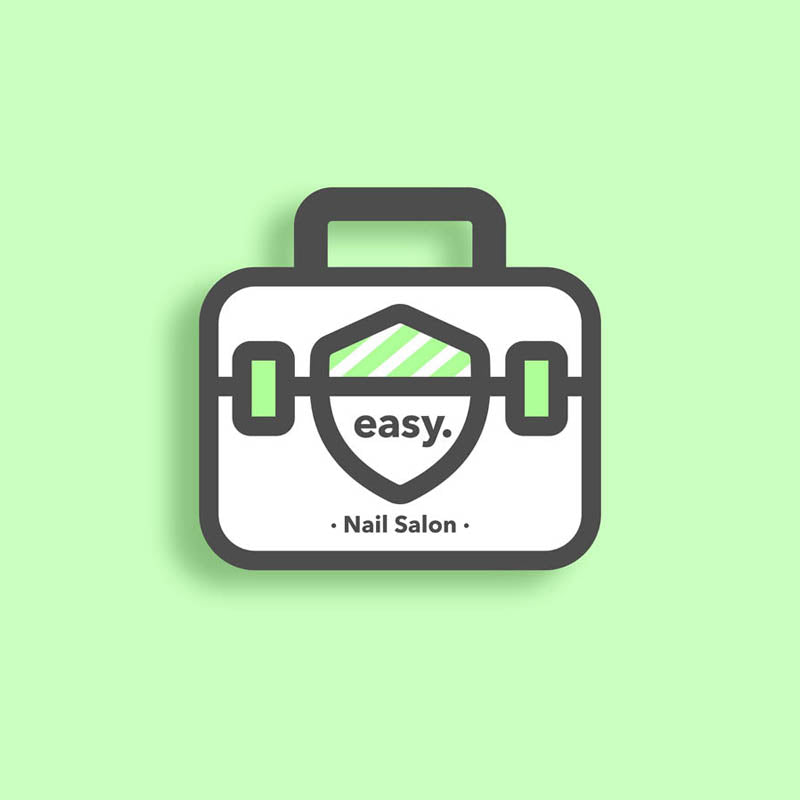
Take Control of Health and Safety in Your Nail Salon with with Easy-to-Use Templates
Simplify health and safety management in your nail salon, nail bar, or beauty studio with our industry-specific templates. Whether you’re running a busy high street salon, managing a boutique nail bar, or working as an independent mobile nail technician, our editable templates help you stay compliant with health and safety regulations while protecting your staff and clients from everyday risks in professional nail care environments.
Many templates come pre-filled with detailed, nail salon–specific content — including risk assessments, health and safety policies, fire safety forms, COSHH documents, accident report forms, and staff safety guidance. This makes completion quick, accurate, and stress-free. With our ready-to-use tools, you can focus on delivering flawless nails, running your salon efficiently, and maintaining a safe, hygienic, and compliant environment for both technicians and clients.
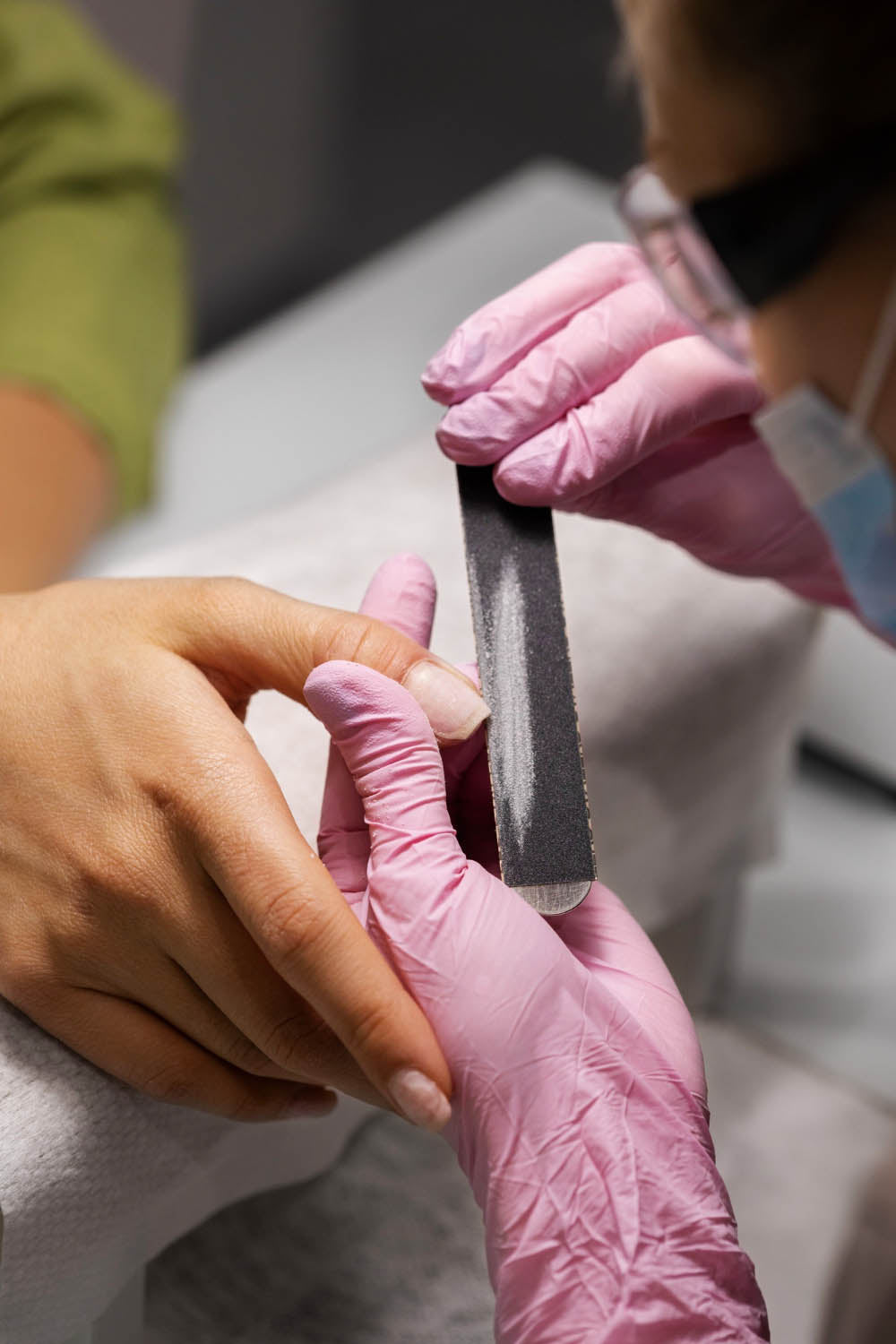
Why Health and Safety is Crucial in Nail Salons
The allure of a nail salon often lies in its promise of beauty and relaxation. However, beyond the aesthetic appeal, a crucial component holds the business together: health and safety. With strict regulations ensuring the well-being of both employees and customers, the role of health and safety in nail salons cannot be overstated.
The Risks of Chemical Exposure
Chemicals in nail products can pose health risks, such as skin irritation or respiratory issues. Compliance with COSHH regulations ensures that these risks are minimised, protecting everyone in the salon.
Importance of Ventilation
Poor ventilation can exacerbate chemical hazards, leading to an unhealthy environment. According to the HSE's guidelines, effective ventilation systems are recommended for ensuring a safe salon atmosphere.
Infection Control: More than Just Cleanliness
Beyond mere cleanliness, proper sanitisation prevents bacterial and fungal infections. Strict procedures, as mandated by regulations, help avoid cross-contamination between clients and technicians.
Legal Ramifications
Ignoring health and safety regulations can result in severe legal consequences, including fines or business closure. Adherence to laws is thus not just ethical but vital for business sustainability.
In Summary...
In summary, health and safety are paramount in the nail salon industry for safeguarding well-being, fulfilling legal obligations, and ensuring business longevity. By ensuring your compliance to health and safety laws and regulations, nail salons can offer a secure and enjoyable experience for all.
Top 3 Health and Safety Hazards in Nail Salons:
-
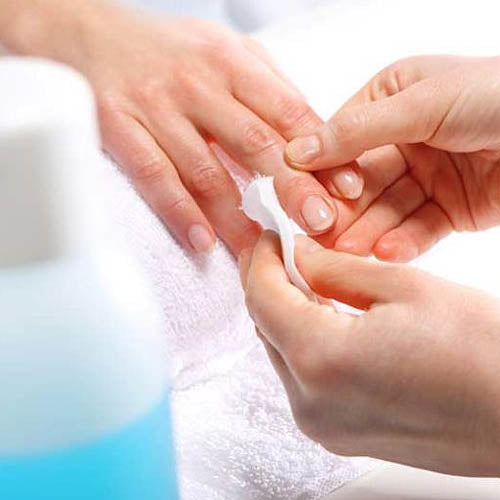
Chemical Exposure
View ProductsTechnicians and clients can be exposed to various chemicals found in nail polish, removers, and other solutions. Proper ventilation and safe storage are crucial to mitigate risks related to fume inhalation and skin contact.
-
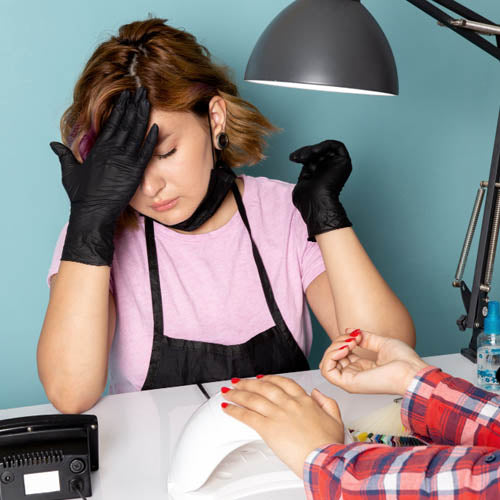
Poor Ventilation
View ProductsLack of proper ventilation can exacerbate the risks associated with chemical exposure and can lead to respiratory issues. Proper air filtration systems are important for the well-being of both staff and customers.
-
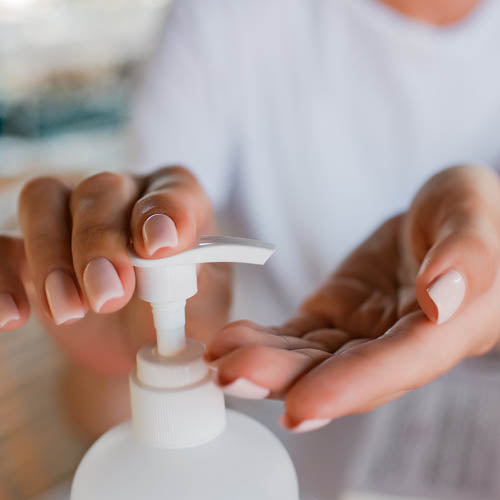
Infection Control
View ProductsThe use of non-sterile tools and equipment in nail salons significantly increases the risk of fungal or bacterial infections. Implementing strict sanitisation protocols is essential to prevent cross-contamination between clients and nail technicians.

Why pay expensive consultant fees when you can manage health and safety yourself?
Improve your compliance while saving time and money by creating health and safety documents, customised to your business, yourself. Our health and safety range for Nail Salons, Nail Technicians, and Manicurists covers a suite of essential templates including health and safety policies, risk assessments, COSHH forms, fire safety templates, health and safety guidance, safety posters and more.
Benefits of managing health and safety yourself...
-

Improve safety
Health and safety at work is about preventing accidents, incidents and ill-health by assessing the work environment, the activities within it, and taking appropriate action.
-

Ensure compliance
Our ready to use templates, many of which are pre-filled, will enable you to quickly increase your compliance to health and safety law.
-

Save money
With health and safety consultants often charging upwards of £400 per day, there is a better way. Take control and save yourself time and money.
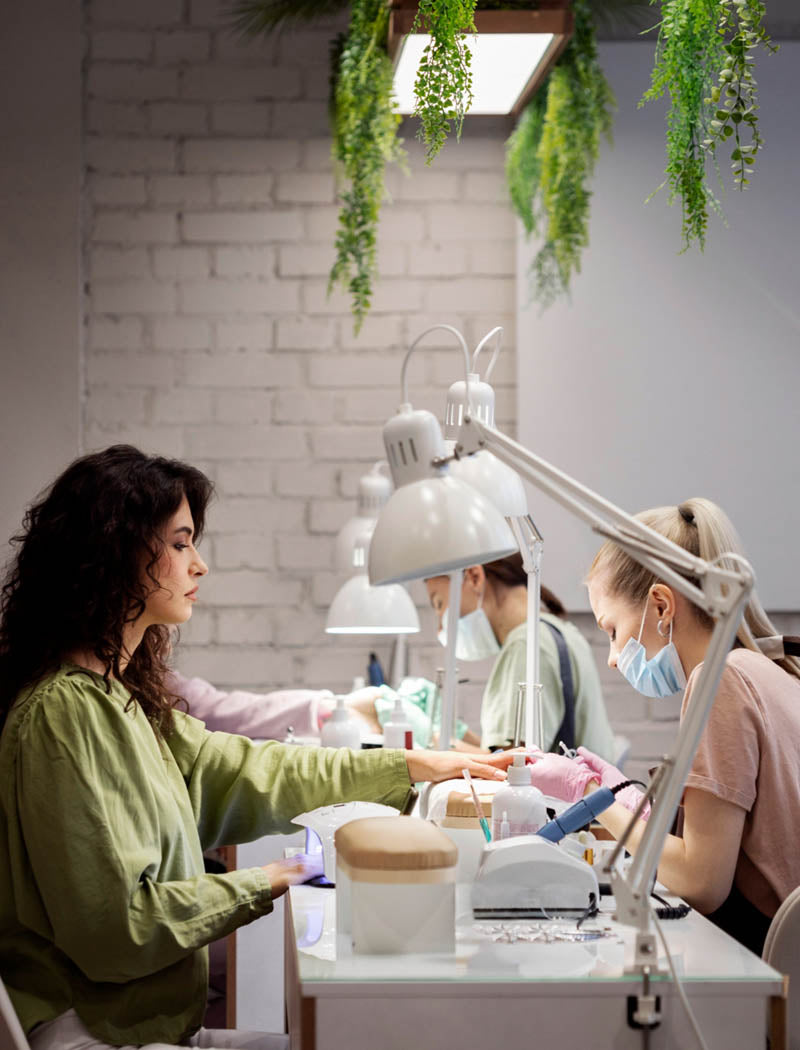
Investing in Health & Safety: A Smart Choice for Nail Salons
Managing a nail salon or nail spa comes with its own set of unique challenges. Between scheduling nail technicians, keeping up with the latest nail art trends, and ensuring a steady flow of clients, time is always of the essence. On top of this, you've got financial considerations, making the prospect of investing in health and safety compliance feel daunting.
But here's the reality: in an industry that involves close contact and the use of chemicals, tools, and equipment, cutting corners on health and safety isn't just risky—it could be catastrophic. Regulations, from COSHH guidelines to HSE ventilation standards, are there to protect both your clients and your team. Failing to comply could result in legal repercussions, damage to your salon's reputation, and ultimately it may compromise the business you've worked so hard to build.
Health and safety isn't just a checkbox; it is foundational to the long-term success of your nail salon.
At easyhealthandsafety we aim to take the friction out of health and safety for beauty businesses by providing products and guidance so simple to use they are almost enjoyable.
Frequently Asked Questions
Nail Salon Health and Safety FAQs
How can I create a risk assessment for my nail salon?
The quickest and easiest way to create a professional risk assessment for your nail salon is by using an editable template, designed specifically for nail bars, salons, and nail technicians.
Creating a compliant and detailed nail salon risk assessment starts with identifying all potential hazards in your salon — from chemical exposure and poor ventilation to tool sanitisation, fire safety, and ergonomic risks. Each hazard should be assessed for the likelihood and severity of harm, with clear control measures documented to reduce risks to staff and clients.
Our ready-to-use Nail Salon Risk Assessment Template provides all the structure and pre-filled content you need, saving hours of work and ensuring full compliance with health and safety regulations. Simply customise the sections to match your salon’s operations, treatments, equipment, and processes to create a thorough, professional document that keeps your business safe and compliant.
For a complete compliance solution, our Nail Salon Health and Safety Template Bundle includes the full Risk Assessment Template along with over 60 other essential documents such as a health and safety policy, fire safety templates, COSHH forms, accident report forms, and staff training guidance. It’s the perfect all-in-one package for nail salon owners, nail technicians, and nail art professionals who want to save time, reduce stress, and stay fully compliant with health and safety laws while maintaining a safe, hygienic, and professional salon environment.
Do nail salons need to conduct a risk assessment?
Yes — all nail salons, nail bars, and beauty studios are legally required to complete a suitable and sufficient risk assessment under health and safety law.
The Health and Safety at Work etc. Act 1974 and the Management of Health and Safety at Work Regulations 1999 require every employer to assess workplace risks and implement measures to protect staff and clients. This includes identifying hazards such as chemical exposure, poor ventilation, infection control, slips and trips, fire risks, and repetitive strain injuries. Even if you run a small or independent salon, a written risk assessment is strongly recommended — and if you employ five or more people, it’s a legal requirement to have it documented.
Our editable Nail Salon Risk Assessment Template provides everything you need to meet these obligations, with pre-filled content tailored to the unique hazards of nail salons. It’s quick to edit, easy to use, and ensures you stay compliant while maintaining a safe, hygienic environment for both clients and technicians.
What are the main health and safety hazards in a nail salon?
The main hazards in a nail salon include chemical exposure, poor ventilation, infection control, slips and trips, fire risks, and ergonomic strain.
Nail salons use various products containing potentially hazardous chemicals, making COSHH compliance essential. Poor ventilation can cause respiratory issues, while inadequate tool sterilisation may spread infection.
Our Nail Salon Risk Assessment Template helps you identify, assess, and control these risks effectively to protect staff and clients.
How can I create a health and safety policy for my nail salon?
You can create a professional health and safety policy for your nail salon using a ready-made, editable template.
A health and safety policy outlines how your salon manages risks and protects staff and clients. It should cover training, cleaning procedures, chemical handling, and emergency plans.
Our Health and Safety Policy Template provides a compliant framework you can easily customise for your business, saving time and ensuring legal compliance. Pre-filled examples are also included to make this process even easier.
What cleaning and sanitisation procedures should a nail salon follow?
Nail salons must follow strict cleaning and sterilisation procedures to prevent infection and cross-contamination. These will become evident by conducting a risk assessment.
All tools that come into contact with skin or nails must be disinfected between clients, and single-use tools should be disposed of safely. Workstations should be sanitised regularly, and proper hand hygiene is essential.
Our Nail Salon Risk Assessment Template includes infection control measures and checklists to help you maintain the highest hygiene standards.
How can I stay compliant with nail salon health and safety regulations?
The easiest way to stay compliant is by using professional, nail salon-specific health and safety templates that meet legal requirements.
Compliance involves maintaining up-to-date risk assessments, COSHH documents, fire safety forms, staff training, and more.
Our Nail Salon Health and Safety Template Bundle, includes a suite of over 60 essential health and safety documents to ensure you stay organised, compliant, and inspection-ready — all in one easy-to-edit package. There is also a user guide included to guide you through the process with ease.
What legal consequences could I face for non-compliance with health and safety regulations?
Non-compliance can result in fines, legal action, or even closure of your salon. It's crucial to stay up to date with regulations to avoid these risks while ensuring the safety and well-being of both your clients and staff.
Easily ensure compliance across your business with our Nail Salon Health and Safety Template Bundle which includes over 60 essential documents — many with pre-filled content — such as a health and safety policy, fire safety templates, COSHH forms, accident report forms, and staff training guidance. It’s the perfect all-in-one package for nail salon owners, nail technicians, and nail art professionals who want to save time, reduce stress, and stay fully compliant with health and safety laws while maintaining a safe, hygienic, and professional salon environment.
How should I store and manage chemicals in my nail salon?
The COSHH regulations set out how to handle, use, and store hazardous substances safely within your nail salon. Products such as acetone, nail polish, and other chemicals must be individually COSHH risk assessed to reflect how they are used in your business. For example, flammable substances should always be stored in a cool, well-ventilated area, away from heat sources and direct sunlight. Proper labelling, staff training, and the use of Safety Data Sheets (SDS) are also key parts of COSHH compliance, helping to keep your salon safe and legally compliant.
Our COSHH Risk Assessment Templates are pre-filled for many common hazardous substances used by nail technicians, making compliance easier and helping you protect yourself, staff, and customers from harm. There is also a Blank COSHH Risk Assessment Template available for substances specific to your business that we have not yet covered.
What steps should I take if there's a health and safety incident in my salon?
In the event of an incident, your first priority is to ensure the immediate safety of everyone involved. Once that's secured, you should record the incident on an accident report form and take any necessary corrective action to prevent further incidents.
Serious incidents may need to be reported to the Health and Safety Executive (HSE) under the Reporting of Injuries, Diseases and Dangerous Occurrences Regulations 2013 (RIDDOR).
Our editable Accident Report Form Template makes it quick and easy to document incidents accurately and in line with health and safety requirements. It includes clear sections for recording what happened, who was involved, any injuries sustained, and the corrective actions taken to prevent recurrence. Keeping detailed accident records not only helps protect your business legally but also demonstrates a proactive approach to health and safety management.
The form is included within our Nail Salon Health and Safety Template Bundle, giving you professional, ready-to-use tools to support compliance and continuous improvement in your salon.
What are the key health and safety regulations governing nail salons and manicurists?
Nail salons and manicurists are subject to a range of health and safety regulations designed to protect both clients and staff. The foundational legislation is the Health and Safety at Work Act 1974, which establishes general duties for employers to ensure a safe work environment. More specific to nail salons, the Control of Substances Hazardous to Health (COSHH) regulations lay down guidelines for the safe handling and storage of chemicals commonly used in nail treatments. Additionally, the Health and Safety Executive (HSE) provides guidelines covering various aspects such as ventilation, fire safety, and the use of personal protective equipment (PPE). It's imperative for nail salon owners to familiarise themselves with these regulations and guidelines to operate a compliant and safe establishment.
Still not sure what your business needs to meet health and safety requirements? Our Simple Guide to Health and Safety Requirements for Your Business outlines the essential documents and steps to help you stay compliant with health and safety regulations.
For complete compliance, our Nail Salon Health and Safety Template Bundle includes over 60 essential documents such as a health and safety policy, COSHH forms, fire safety templates, and accident report forms. It’s the ideal all-in-one package for salon owners and nail technicians who want to save time, simplify compliance, and maintain a safe, professional salon environment.







